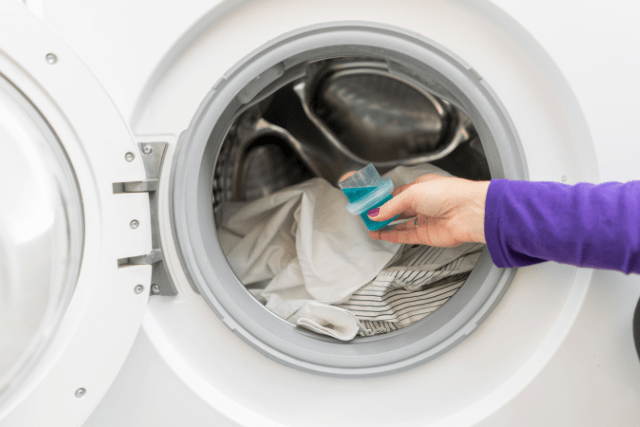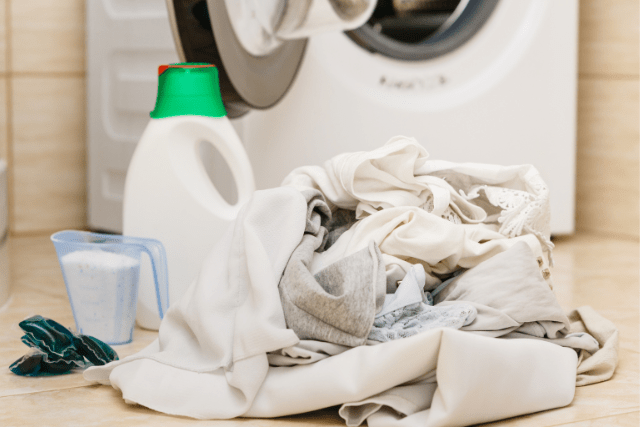When it comes to purchasing a new washing machine, the age-old debate between top load and front load machines often arises.
In this blog post, we’ll explore the key differences between top load and front load washing machines to help you make an informed decision.
Introduction
Washing machines are essential for several reasons, including convenience, efficiency, and hygiene. They have become a staple in modern households due to the numerous benefits they provide.
There are various types of washing machines available in the market, each with its unique features and benefits. The three main types are fully-automatic, semi-automatic, and portable washing machines.
Fully-Automatic Washing Machines
Fully-automatic washing machines are designed to handle the entire washing process, from filling the water to spinning and draining, without any manual intervention. They come in two subtypes: front load and top load.
Front Load Fully-Automatic Washing Machines:
- Use a horizontal drum and rely on gravity and tumbling action for cleaning.
- Offer better cleaning performance and are more water and energy-efficient.
- Can be stacked with a dryer to save space.
- Generally have a larger capacity and more advanced features.
Top Load Fully-Automatic Washing Machines:
- Use a vertical drum and either an agitator or an impeller for cleaning.
- Are generally easier to load and unload due to their design.
- Have a smaller footprint and are often more affordable.
- May be less efficient and gentle on fabrics compared to front load machines.
Semi-Automatic Washing Machines
Semi-automatic washing machines require some manual intervention during the washing process. They typically have two separate tubs: one for washing and one for spinning.
- Users need to transfer the clothes from the washing tub to the spinning tub manually.
- They consume less water and energy compared to fully-automatic machines.
- Are generally more affordable and have a lower initial cost.
- May require more time and effort to operate compared to fully-automatic machines.
Portable Washing Machines
Portable washing machines are compact and lightweight, designed for small spaces or for those who need a temporary or mobile laundry solution.
- Ideal for apartments, dormitories, RVs, or situations where space is limited.
- Can be easily connected to a standard faucet and electrical outlet.
- Offer limited capacity and may not have advanced features found in larger machines.
- Can be easily moved and stored when not in use.
Key Takeaways:
- Front load washers are generally more energy-efficient and water-efficient than top load washers.
- Front load washers use a tumbling motion for cleaning, offering superior stain removal and fabric care.
- Top load washers are often more compact and convenient for adding or removing clothes during the wash cycle.
- Front load washers are quieter and cause less vibration during operation.
- Consider your space, cleaning preferences, and energy efficiency goals when choosing between these washer types.
Why Washing Machines are Essential?
- Convenience: Washing machines save time and effort by automating the laundry process, allowing users to focus on other tasks or leisure activities.
- Efficiency: Modern washing machines are designed to use water and energy efficiently, reducing the environmental impact and lowering utility bills.
- Hygiene: Washing machines provide a thorough and consistent cleaning process, ensuring that clothes, linens, and other fabrics are properly sanitized and free from dirt, allergens, and bacteria.
- Gentle on fabrics: Washing machines are designed to handle various fabrics and materials, ensuring that clothes are cleaned without causing damage or excessive wear.
- Customization: Most washing machines offer multiple settings and cycles, allowing users to tailor the washing process to their specific needs and preferences.
When it comes to choosing between front load and top load washing machines, each type has its advantages and disadvantages, making the decision dependent on individual preferences and needs.
Top Load Washing Machines
Top load washing machines are a type of washing machine where the laundry is loaded and unloaded through a door on the top of the unit. They have been a popular choice for many years due to their ease of use and affordability.

Top load washing machines typically have a central agitator or an impeller that helps move the clothes around in the water, ensuring thorough cleaning.
How top load washing machines work?
They are called “top load” because the user loads the laundry from the top of the machine. Here’s a step-by-step explanation of how top load washing machines work:
1. Loading the machine
The user opens the lid on the top of the washing machine and places the laundry inside the drum, which is a perforated, cylindrical container. The user also adds detergent, either directly into the drum or in a designated detergent dispenser.
2. Filling with water
Once the machine is loaded and the lid is closed, the user selects the desired wash cycle and settings, such as water temperature and load size. The washing machine’s control system then opens an inlet valve, filling the drum with water. The water level depends on the selected load size and the specific washing machine model.
3. Agitation
Top load washing machines typically use an agitator or an impeller to move the clothes and water around the drum. The agitator is a vertical column with fins or paddles that rotates back and forth, while the impeller is a low-profile, rotating disc with raised ridges. Both systems create water movement and friction between the clothes, which helps to loosen dirt and stains.
4. Washing cycle
The washing machine’s control system determines the length and intensity of the wash cycle based on the user’s selections. During the cycle, the machine may pause and change the direction of the agitator or impeller to ensure thorough cleaning. The detergent dissolves in the water and penetrates the fabric fibers, breaking down and removing dirt and stains.
5. Rinsing
After the wash cycle is complete, the washing machine drains the soapy water through a drain pump and hose. The machine then refills the drum with clean water and agitates the clothes again to rinse out the detergent and any remaining dirt. This process may be repeated several times, depending on the selected rinse cycle.
6. Spin cycle
Once the rinsing is complete, the washing machine enters the spin cycle. The drum spins at high speed, using centrifugal force to remove excess water from the clothes. The water is forced through the perforations in the drum and collected in a drain pump, which expels it through the drain hose.
7. End of the cycle
When the spin cycle is finished, the washing machine stops spinning, and the user can open the lid to remove the clean, damp clothes. The clothes are then typically transferred to a dryer or hung up to air dry.
Pros of Top Load Washing Machines
- Ease of use: Top load machines are often considered more user-friendly, as they don’t require you to bend down to load and unload laundry. This can be particularly beneficial for those with back problems or mobility issues.
- Faster wash cycles: Top load machines typically have shorter wash cycles compared to front load machines, which can save you time on laundry day.
- No need for special detergent: Unlike some front load machines, top load machines do not require special high-efficiency (HE) detergent, which can save you money in the long run.
Cons of Top Load Washing Machines
- Less energy and water-efficient: Top load machines generally use more water and energy than front load machines, which can lead to higher utility bills.
- Less gentle on clothes: The agitator in top load machines can be rougher on clothes, potentially causing more wear and tear over time.
- Limited capacity: Top load machines usually have a smaller capacity compared to front load machines, which can be a drawback for larger households or those who prefer to do fewer loads of laundry.
Front Load Washing Machines
Front load washing machines are a type of washing machine where the laundry is loaded and unloaded through a door on the front of the unit. They have gained popularity in recent years due to their efficiency, modern design, and gentle washing action.
Front load washing machines use a horizontal drum that rotates to tumble the clothes in the water and detergent, ensuring thorough cleaning without the need for an agitator.
How front load washing machines work?
As the name suggests, these machines are loaded from the front, with the user opening a door on the front of the machine to access the drum.

Here’s how front load washing machines work:
1. Loading the machine
The user opens the front door of the washing machine and places the laundry inside the drum, which is a horizontally mounted, perforated, cylindrical container. The user also adds detergent, fabric softener, and/or bleach into designated compartments in the detergent drawer, which is typically located on the top or front of the machine.
2. Filling with water
Once the machine is loaded and the door is closed, the user selects the desired wash cycle and settings, such as water temperature, spin speed, and additional options. The washing machine’s control system then opens an inlet valve, filling the drum with water.
The water level in front load machines is typically lower than in top load machines, as the drum’s rotation creates a tumbling action that requires less water to effectively clean the clothes.
3. Tumbling action
Front load washing machines do not have agitators or impellers like top load machines. Instead, they rely on the rotation of the drum to create a tumbling action that moves the clothes and water around. The drum has paddles or baffles on its inner surface that lift and drop the clothes as the drum rotates, creating friction and water movement to loosen dirt and stains.
4. Washing cycle
The washing machine’s control system determines the length and intensity of the wash cycle based on the user’s selections. During the cycle, the machine may pause and change the direction of the drum rotation to ensure thorough cleaning. The detergent dissolves in the water and penetrates the fabric fibers, breaking down and removing dirt and stains.
5. Rinsing
After the wash cycle is complete, the washing machine drains the soapy water through a drain pump and hose. The machine then refills the drum with clean water and rotates the drum to rinse out the detergent and any remaining dirt. This process may be repeated several times, depending on the selected rinse cycle.
6. Spin cycle
Once the rinsing is complete, the washing machine enters the spin cycle. The drum spins at high speed, using centrifugal force to remove excess water from the clothes. The water is forced through the perforations in the drum and collected in a drain pump, which expels it through the drain hose.
7. End of the cycle
When the spin cycle is finished, the washing machine stops spinning, and the user can open the front door to remove the clean, damp clothes. The clothes are then typically transferred to a dryer or hung up to air dry.
Pros of Front Load Washing Machines
- Energy and water efficiency: Front load machines use less water and energy than top load machines, making them more environmentally friendly and cost-effective in the long run.
- Gentler on clothes: Front load machines use a tumbling action instead of an agitator, which is gentler on clothes and can help extend their lifespan.
- Larger capacity: Front load machines typically have a larger capacity than top load machines, allowing you to wash more clothes in a single load.
- Stackable design: Many front load machines can be stacked with a compatible dryer, saving valuable floor space in smaller laundry rooms or apartments.
Cons of Front Load Washing Machines
- Higher upfront cost: Front load machines tend to be more expensive than top load machines, which can be a deterrent for budget-conscious shoppers.
- Longer wash cycles: Front load machines generally have longer wash cycles than top load machines, which can be a drawback for those with busy schedules.
- Special detergent required: Front load machines often require high-efficiency (HE) detergent, which can be more expensive than regular detergent.
Front Load vs. Top Load Washers: An In-depth Comparison
Choosing the right washing machine is a decision that can influence your daily life, utility bills, and environmental footprint.
- Washer Types: Front Load and Top Load When it comes to the basic design, front load washers and top load washers are distinct. Front load washers have a door on the front through which you load and unload laundry. On the other hand, top load washers have an opening on the top, allowing you to add or remove clothes without the need to bend over. This fundamental difference in design sets the stage for various other differentiating factors.
- Water and Energy Usage One of the most notable differences between these washer types is their water and energy consumption. Front load washers are generally more energy-efficient and water-efficient compared to top load washers. Front load washers typically use less water due to their tumbling motion, which requires less water to thoroughly clean clothes. Additionally, front load washers often have higher spin speeds, leading to better water extraction and shorter drying times.
- Washing Mechanism and Cleaning Performance Front load washers utilize a tumbling action to clean clothes. This method is gentler on fabrics and offers superior stain removal. In contrast, top load washers, especially those with agitators, can be more aggressive on clothes and might not be as effective at stain removal. If you’re looking for a washer that offers excellent cleaning performance while being gentle on your garments, a front load washer might be the better choice.
- Noise and Vibration Front load washers are known for being quieter and causing less vibration during operation compared to top load washers. This is especially relevant if your laundry area is close to living spaces or bedrooms. If minimizing noise is a priority for you, a front load washer could be the solution.
- Space Considerations Top load washers are often narrower and more compact, making them suitable for smaller laundry areas. On the other hand, front load washers might require more space due to the need for door clearance when opening. Consider the available space in your laundry room when making your choice.
- Ease of Loading and Unloading Top load washers are generally more convenient for adding or removing clothes during the wash cycle. You don’t need to wait for the current cycle to finish to add that sock you missed. However, front load washers tend to have faster spin speeds, leading to shorter drying times. It’s a trade-off between convenience and efficiency.
- Maintenance and Longevity Front load washers, due to their design, can sometimes develop odors if not properly maintained. Regular cleaning of the rubber gasket and leaving the door slightly ajar can help prevent this issue. Top load washers are less prone to odor-related concerns. In terms of longevity, both types of washers can last a long time with proper care.
- Cost Considerations Front load washers are often initially more expensive than top load washers. However, the energy and water savings over time can potentially offset this higher upfront cost. Additionally, considering the long-term benefits in terms of cleaning performance and efficiency might make the investment worthwhile.
- Load and Unload Convenience With a front load washer, you’ll need to bend over to load and unload clothes. This might not be ideal for individuals with back problems or those who find bending over frequently uncomfortable. On the other hand, top load washers offer a more ergonomic loading and unloading experience.
- Environmental Impact Front load washers are generally considered more environmentally friendly due to their water and energy efficiency. If reducing your carbon footprint is important to you, a front load washer aligns well with sustainability goals.
Front load washers excel in energy efficiency and cleaning performance, while top load washers offer convenience and ease of use. Consider your priorities and lifestyle to make an informed decision that suits your needs.
Key Differences Between Top Load and Front Load Washers
| Key Differences | Top Load Washers | Front Load Washers |
|---|---|---|
| Loading Method | Loaded from the top of the machine | Loaded from the front of the machine |
| Water and Energy Usage | Typically use more water and energy compared to front load washers | Generally more energy-efficient and water-efficient |
| Spin Speed | Lower spin speed (around 600 RPM), resulting in less water extraction and longer drying time | Higher spin speed (around 1500 RPM), resulting in better water extraction and shorter drying time |
| Washing Mechanism | Use an impeller or agitator to move clothes in the wash basket | Tumble clothes to clean them, providing a gentler washing action and better stain removal |
| Noise and Vibration | May be louder and cause more vibration during operation | Quieter and cause less vibration during operation |
| Design and Space | Narrower design, allowing for placement in smaller spaces | May require more space due to the need for a door clearance |
| Cycle Interruption | More convenient for adding or removing clothes during the wash cycle | – |
The choice between the two types depends on your specific needs, preferences, and home layout.
Front load washers are generally more energy-efficient, water-efficient, and provide better cleaning performance, while top load washers offer potentially shorter cycle times and more convenience in terms of loading and unloading clothes.
Maintenance and Cleaning Tips for Top Load and Front Load Washing Machines
Proper maintenance and cleaning of your washing machine, whether it’s a top load or front load model, are essential for optimal performance and longevity.

Here are some practical tips to help you keep your washing machine in top shape:
1. Clean the detergent dispenser
Over time, detergent residue can build up in the dispenser, leading to reduced cleaning efficiency and potential clogs. Regularly remove and clean the detergent dispenser according to the manufacturer’s instructions. For most machines, this involves detaching the dispenser and washing it with warm water and a mild detergent.
2. Wipe the door and gasket
Front load washing machines are particularly prone to mold and mildew growth around the door gasket due to trapped moisture. To prevent this, regularly wipe the door and gasket with a damp cloth and leave the door slightly open after each use to allow the interior to air dry. For top load machines, wipe the lid and surrounding areas to remove any detergent or fabric softener residue.
3. Clean the lint filter
Some top load washing machines have a lint filter that needs to be cleaned periodically. Check your owner’s manual for the location of the lint filter and follow the instructions for cleaning or replacing it as needed.
4. Run a cleaning cycle
Both top load and front load washing machines can benefit from a monthly cleaning cycle to remove detergent residue, mineral buildup, and any lingering odors. You can use a washing machine cleaner specifically designed for this purpose or run a hot water cycle with a cup of white vinegar or baking soda.
5. Inspect and replace hoses
Regularly inspect the water supply hoses for signs of wear, such as cracks or bulging. Most manufacturers recommend replacing the hoses every 3-5 years to prevent leaks and potential water damage. Also, check the drain hose for any clogs or kinks that may affect the machine’s draining efficiency.
6. Level the washing machine
An unbalanced washing machine can cause excessive noise, vibration, and wear on the machine’s components. Ensure your washing machine is level by adjusting the feet according to the manufacturer’s instructions. Use a carpenter’s level to check the machine’s balance and make any necessary adjustments.
7. Avoid overloading
Overloading your washing machine can strain the motor, bearings, and other components, leading to reduced performance and potential damage. Always follow the manufacturer’s guidelines for load size and distribute clothes evenly inside the drum.
How Do Front Load Washers Save Energy Compared to Top Load Washers?
Front load washers offer several energy-saving advantages when compared to top load washers:
- Reduced Water Usage: Front load washers consume approximately 50% less water than their top load agitator counterparts. This is achieved through their innovative design, which involves tumbling clothes in a shallower pool of water. This not only conserves water but also reduces the energy required to heat the water for washing.
- Higher Spin Speeds: Front load washers generally feature higher spin speeds, resulting in better water extraction from the laundry. This efficiency in water removal translates to shorter drying times and lower energy consumption when using a dryer.
- Effective Tumbling Motion: Front-load washers use a tumbling motion that is more effective in terms of water and power usage, both during the washing and drying processes. This approach contributes to a reduced carbon footprint for households.
- Purposeful Energy-Efficient Design: Front load machines are engineered with a specific focus on minimizing water and energy consumption, distinguishing them from traditional top load washers.
- Superior Cleaning Performance: Front-load washers excel in delivering superior cleaning results while remaining highly efficient. They utilize the least amount of water compared to other washer categories, while also extracting a larger portion of this water. This dual effect leads to shorter dryer cycles and reduced energy consumption.
How to Reduce Water Usage When Using A Top Load Washer?
To enhance water conservation while laundering clothes using a top load washer, you can adopt the subsequent strategies:
Opt for the Right Load Size: It’s important to be mindful of the size of your laundry load and select the appropriate water level accordingly. By doing so, you can prevent the unnecessary wastage of water that might occur when using an excessive amount for smaller loads.
Leverage Full Load Cycles: To make the most of your washer’s capacity, prioritize running full loads of laundry. This practice has a dual benefit: it reduces the frequency of washing cycles required and subsequently curtails the overall water consumption.
Utilize Water-Efficient Settings: Many modern top load washers offer settings or dedicated cycles designed to conserve water. Whenever these options are available, it’s advisable to make use of them. Doing so will enable you to minimize the amount of water used during the washing process.
Address Stains Preemptively: Treating stains before initiating the washing process is an effective way to mitigate the necessity for extra water or additional wash cycles. By treating stains in advance, you can avoid the need for prolonged washing, which in turn contributes to reduced water usage.
Consider Soaking Clothes: For particularly soiled items of clothing, consider soaking them in a tub of soapy water prior to washing. This preliminary step can aid in the removal of stubborn stains and residues, potentially reducing the requirement for extensive washing cycles and consequently conserving water.
Upgrade to a High-Efficiency Model: When contemplating the replacement of your current washer, explore the option of acquiring a high-efficiency top load washer that incorporates an impeller mechanism. These innovative washers utilize a decreased amount of water in comparison to traditional top load agitator models, offering both superior performance and water conservation benefits.
Your proactive efforts in this regard contribute positively to broader water conservation initiatives.
Conclusion
When choosing between a top load and front load washing machine, consider factors such as your budget, space constraints, and personal preferences. Top load machines are generally more affordable and user-friendly, while front load machines offer greater efficiency and capacity. By weighing the pros and cons of each type, you can find the perfect washing machine to meet your needs and make laundry day a breeze.
Frequently Asked Questions
What is the difference between a top load and front load washing machine?
A top load washing machine is one where you load your laundry through a door on the top of the machine, while a front load washing machine has a door on the front of the machine. The main difference lies in the loading mechanism and the way they clean clothes.
Which type of washing machine is better, top load or front load?
There is no definitive answer to which type is better because it depends on your specific needs and preferences. However, front load washing machines are generally considered to be more efficient, use less water and energy, and provide a gentler wash for your clothes. On the other hand, top load washing machines are easier to load and unload and are usually more affordable.
Do top load washing machines clean clothes as well as front load washing machines?
Yes, top load washing machines can clean clothes just as well as front load washing machines. The cleaning performance depends on other factors such as the wash cycle, detergent used, and the size of the load. Both top load and front load washers have advanced technologies and features that ensure thorough cleaning.
Are front load washing machines more energy-efficient?
Yes, front load washing machines are generally more energy-efficient than top load washing machines. They use less water and electricity due to their design and tumbling action. This results in lower utility bills and reduced environmental impact.
Are top load washing machines easier to use?
Top load washing machines are generally considered to be easier to use because you don’t have to bend over to load and unload clothes. They require less effort to operate and are more convenient for individuals with mobility issues.
Can I use the same detergent for both top load and front load washing machines?
Yes, you can use the same detergent for both top load and front load washing machines. However, it’s important to use the correct amount and follow the manufacturer’s instructions for optimal cleaning results.
Are front load washing machines more expensive than top load washing machines?
Front load washing machines can be more expensive than top load washing machines initially. However, they are often more energy-efficient, which can result in long-term cost savings on utility bills. Additionally, factors such as brand, features, and capacity can also influence the price.
Which type of washing machine is more space-efficient?
If space is a concern, top load washing machines are generally more space-efficient as they have a smaller footprint.







